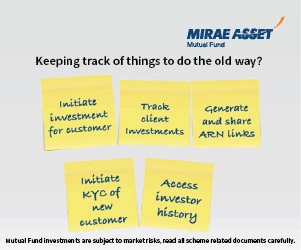Things you need to know when planning foreclosure of your home loan

Foreclosure of a home loan is a wise decision as it helps lower the interest burden and brings down the overall cost of the property to the owner, while preserving the asset value. However, foreclosure of home loan could also be tricky, particularly if one is unaware of the details and the exact process. If not planned correctly, the decision for home loan foreclosure could backfire. If you are looking at foreclosing your home loan, start with thorough research, assess all the pros and cons and perhaps most importantly, understand the foreclosure process in detail.
Points to help understand the process of foreclosing a home loan
1) Choose wisely
Before availing a home loan, do your research regarding various foreclosure criteria and decide which loan to go with. This is especially important if you plan on making a prepayment at a later stage of the loan tenure. Check all home loan options being provided by various banks and pick a scheme that allows the most hassle-free prepayment option.
2) Calculate the percentage share of your home loan EMI vis-a-vis your monthly income
To avoid excess financial strain, the percentage of your monthly income being spent towards the home loan EMI payment should ideally not exceed 40%. If a larger percentage of your income is directed towards EMI payments, it is advisable to pay off the home loan at the earliest possible time.
3) Assess trade-off between home loan EMIs and return on other investments
When you have surplus money as a result of a windfall (such as arrears paid in lieu of pay revisions), it could be invested in various profitable ways that fetch great returns over a period. However, exceptions could be made if you are close to retirement age, when regular income will no longer be assured. In such cases, home loan foreclosure could be a more viable option as compared to additional investments.
4) Evaluate tax benefits
Home loans offer excellent tax benefits with attractive rebates on both the interest as well as the principal components. One disadvantage of home loan foreclosure is having to let go of this opportunity to claim tax deductions. It is therefore advisable to analyse this aspect closely when planning your home loan foreclosure.
5) Weighing the impact of foreclosure on the rest of your finances
Financial planning includes planning in advance for key life events such as retirement planning, insurance, health care, children’s education / marriage funds and other big-ticket expenditures. Foreclosure payments should be paid only from available surplus funds after all these essential expenses are taken care of so that they do not act as a hindrance to important financial priorities.
Common mistakes to avoid when planning home loan foreclosure
1) Paying off the loan using your savings
Doing so depletes one’s cash reserves and it may pose a problem in times of emergencies. It also leads to a situation where better investment options slip away.
2) Allowing loan takeover by another bank
Banks often make an offer to home buyers that they are willing to take over their current outstanding home loan at a lower interest rate, thus lowering the loan tenure or the EMI of the existing home loan. This is known as a home loan balance transfer offer. While this helps bring down the total interest paid over the loan tenure, the processing charges and other fees charged by banks for refinancing and closure of such home loans may be quite high and significantly eat into your savings. It may sometimes even happen that the low interest rate is only an introductory offer for the first couple of years and beyond that you may end up paying more towards these one-time charges than what is actually saved in the reduced EMI.
3) Prepaying the loan by increasing the EMI
This is a common strategy adopted by salaried borrowers. With growth of your career and availability of higher disposable incomes, many prefer to increase the EMI payable and prepay the loan sooner.
Although doing so does speed up the repayment, the ability to raise future loans sees a decline. Normally, banks fix an EMI to income ratio or Fixed Obligations to Income Ratio when planning loan disbursement. As a result, increasing the EMI beyond what is suggested by this ratio restricts the loan size that the individual would be entitled to avail in the future if they are paying off their current loan.
4) Home saver loan
Recently, banks have started offering a current account linked with the home loan account. Banks calculate the loan interest on the outstanding loan minus the balance in the current account, which leads to lower EMIs. This lets homebuyers access this fund during emergencies while at the same time also take advantage of the lower EMI by putting their surplus cash to use. However, this option may not be very helpful if the individual is unsure of having a reasonably high average balance in his/her current account. Also, the individual loses out on the chances of earning higher returns in case better investment options are available. It is necessary to take this opportunity cost into account when planning foreclosure of your home loan.
5) Prepaying later
In home loans, the interest component is high at the start of the payment schedule. As the borrower continues to make his/her regular payments, the interest payouts start to decrease and the principal repayment component continues to increase proportionately. Therefore, if the borrower wishes to prepay the home loan, it is best to do so at the start of the loan tenure. Prepaying later does not help save much in terms of interest payments, but in fact, it decreases the liquidity of the borrower, while providing only minimal benefits. However, even in case of early foreclosure, it is recommended not to foreclose the home loan within six months of taking it since this may involve higher processing fees.
Certain banks have a stipulated minimum number of years or EMI payments that need to be made before they permit foreclosure. It is best to check with the bank and plan your foreclosure accordingly.
List of important documents to be obtained after home loan foreclosure
1) Lien on property
After closing the home loan, it is very important to get the lien on the property removed by the registrar’s office. This is crucial because one cannot sell the property in question until the lien on it is removed. It is best to confirm with the lender if a lien has been put on the property, because every lender may not do so when you purchase a house using a home loan.
2) No-objection certificate (NoC)
It is necessary to get an NoC from the lender, stating clearly that all dues have been paid and the lender no longer holds any right over the property. The NoC should also mention the borrower’s name and the loan account number. This is a primary document required in case you plan to sell your home at a later date.
3) Original property papers
All property documents submitted to the lender need to be returned. It is better to get the documents in person rather than having them couriered, as this ensures that the papers are not misplaced or damaged. Check that all papers are kept securely and none of the pages are missing or torn, as this gives rise to legal issues in case one applies for a second mortgage. Do a thorough check of every single page of the original property documents before signing any acknowledgement that the original property papers have been received back.
4) Updated CIBIL report
There have been instances when financial institutions/banks have not informed the Credit Information Bureau (India) Limited (CIBIL) about the foreclosure of a home loan in a timely manner. As a result, the closed loan is not reflected in the credit report. However, the credit score is an important indicator of your creditworthiness and hence you must ensure that the details in the report are updated in a timely manner. Bearing in mind that this CIBIL update takes 30 days, you must contact the lender and ensure that they have sent the required information from their end. Alternately, you can send a rectification request to CIBIL with supporting documentation to get your credit report details corrected. Once the information is updated on the CIBIL portal, you can request your credit report and check whether the home loan foreclosure is updated in your report.
5) Encumbrance certificate
The encumbrance certificate is a document that lists out all the financial transactions with regards to the property in question. After the mortgage on the property is cancelled and the lien is taken off, the same needs to reflect on the encumbrance certificate. In the event that the encumbrance certificate has no mention about the home loan foreclosure, it is advisable to approach either the lender or the registrar’s office for the needful action / procedure.
6) Written acknowledgement
Remember that apart from making the loan prepayment, you also need to pay simple interest for the month towards which the principal is being prepaid. After making the final payment, it is important to get an acknowledgement for this prepayment in writing. This will serve as written proof of the fact that the loan payment has indeed been made in full and the loan account has been closed. The acknowledgement also indicates the outstanding principal after prepayment and the balance home loan tenure. This must be signed and stamped by an authorised bank representative.
(This article has been contributed by Paisabazaar.com)
Queries
-
What is the benefit of mutual fund STP
Aug 29, 2019
-
How much to invest to meet target amount of Rs 2 Crores
Aug 26, 2019
-
Can I achieve my financial goals with my current mutual fund investments
Aug 24, 2019
-
Can you tell me return of various indices
Aug 19, 2019
-
What would be the post tax return on different investments
Aug 18, 2019
-
Which Principal Mutual Fund scheme will be suitable for my retirement corpus
Aug 16, 2019
-
What is the minimum holding period for availing NCD interest
Aug 4, 2019
Top Performing Mutual Funds
Recommended Reading
Fund News
-
Groww Mutual Fund launches Groww Nifty PSE ETF
Jan 22, 2026 by Advisorkhoj Team
-
Samco Mutual Fund launches Samco Mid Cap Fund
Jan 22, 2026 by Advisorkhoj Team
-
WhiteOak Capital Mutual Fund launches WhiteOak Capital Consumption Opportunities Fund
Jan 20, 2026 by Advisorkhoj Team
-
Shriram Mutual Fund launches Shriram Money Market Fund
Jan 19, 2026 by Advisorkhoj Team
-
PPFAS Mutual Fund launches Parag Parikh Large Cap Fund
Jan 19, 2026 by Advisorkhoj Team














